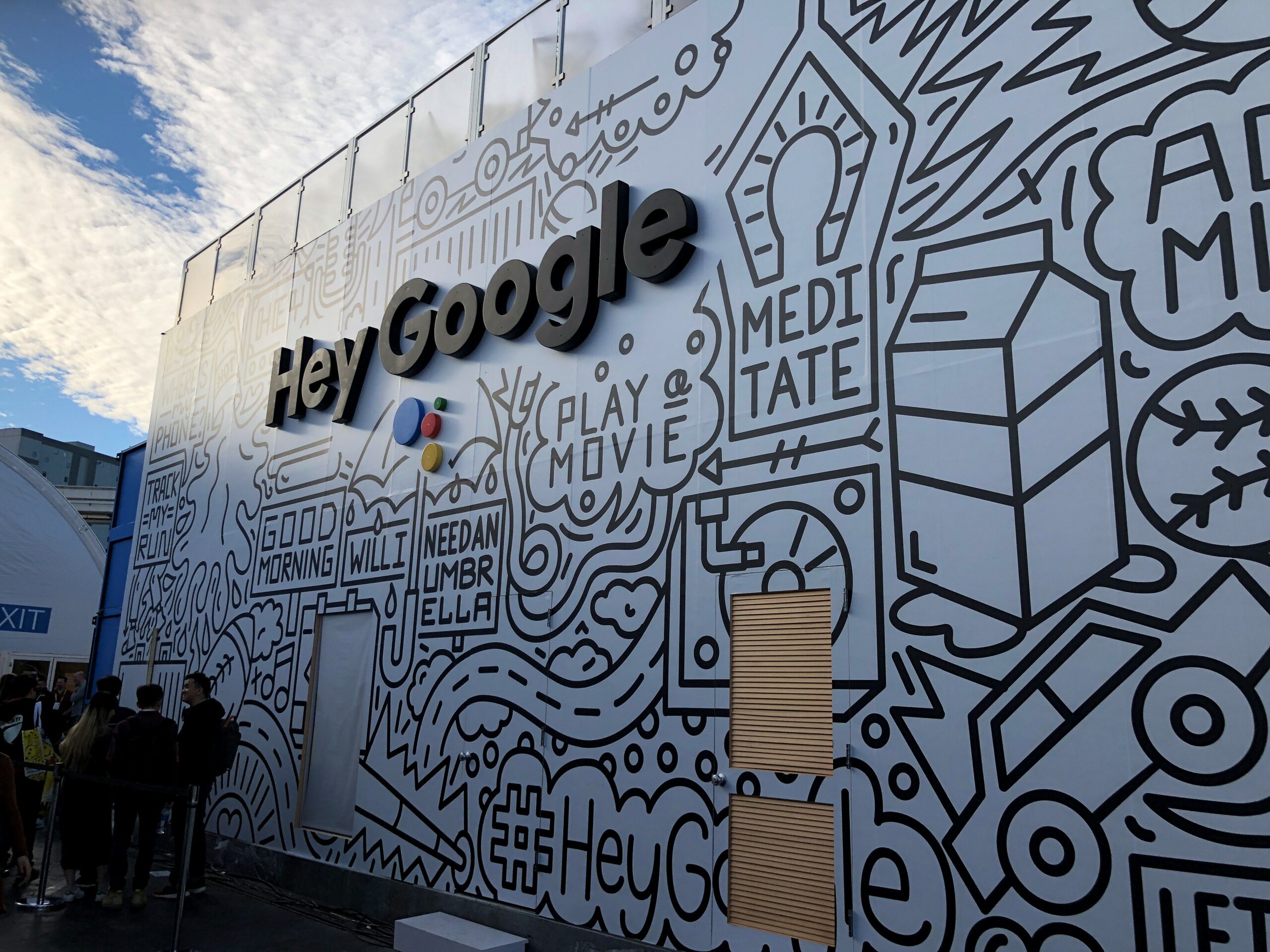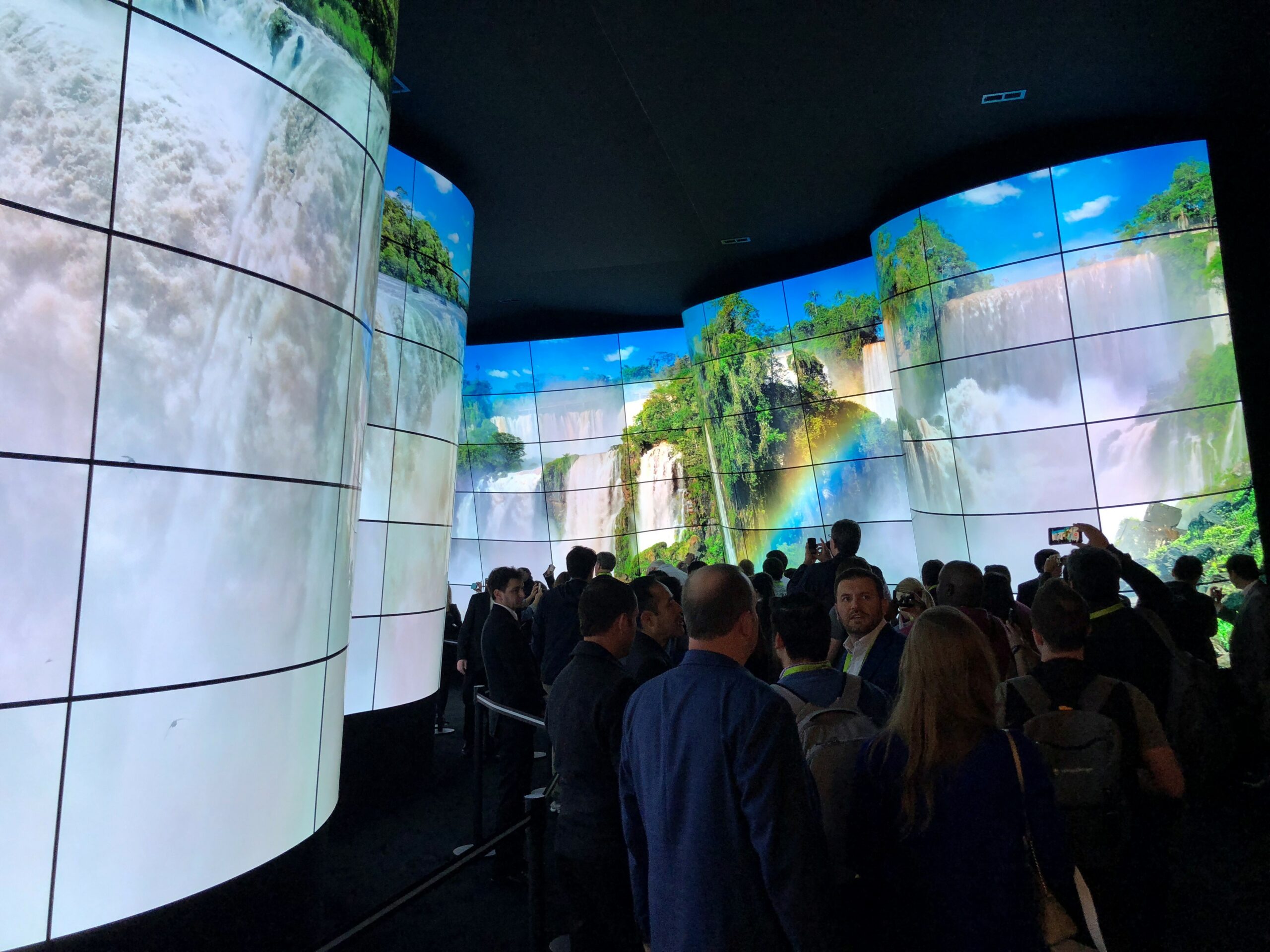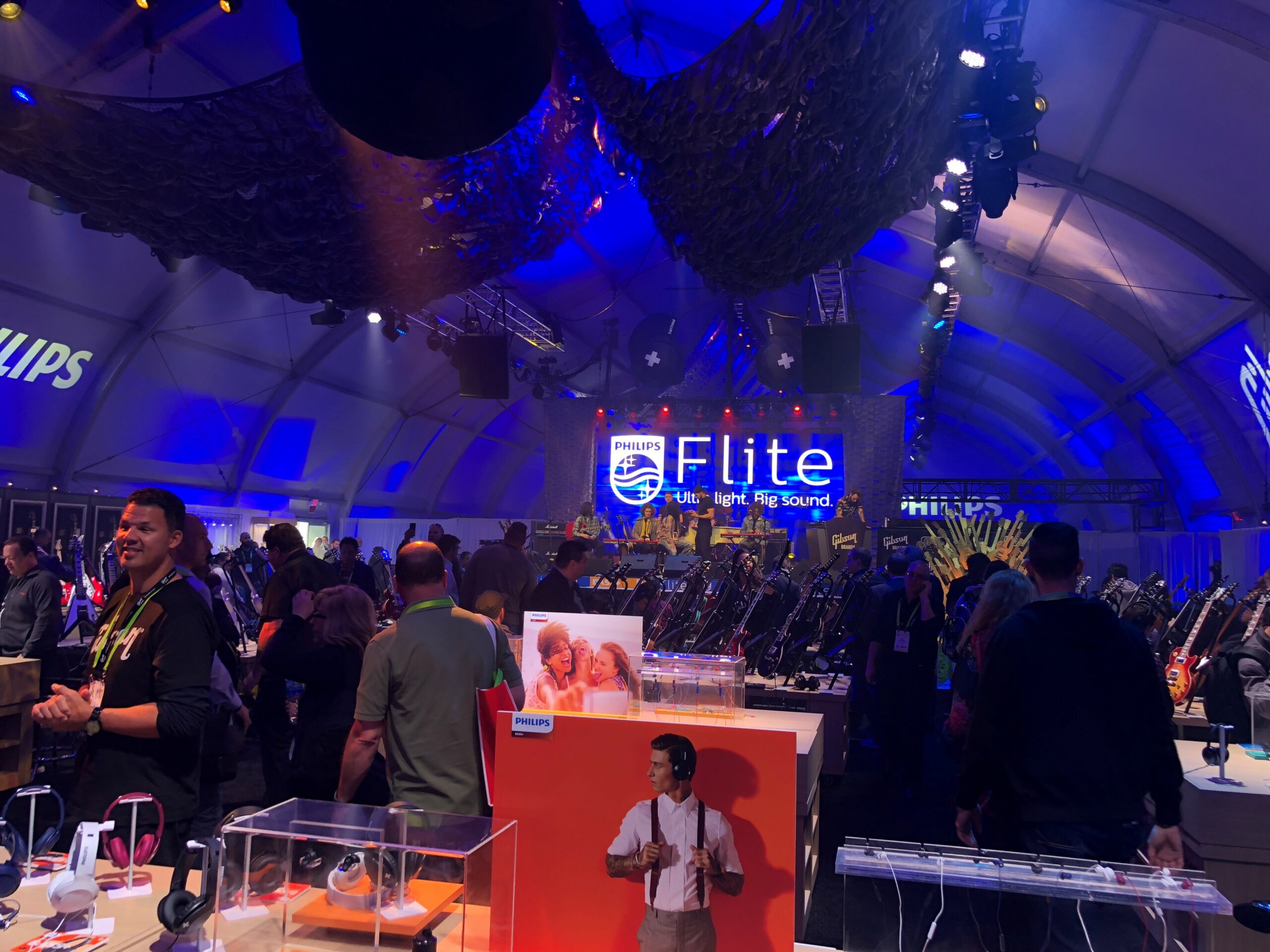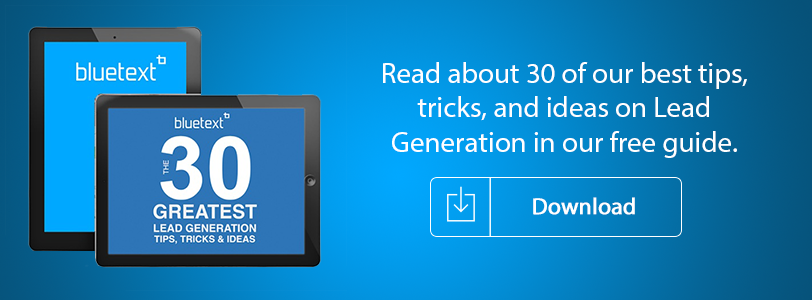In previous posts, we’ve discussed some of the components that top marketing firms know make a successful marketing campaign. In this post, we’ll explore why audience segmentation is so important to a campaign’s success, and how top marketing firms can drive the messaging themes and creative approach to the campaign.
One client of ours is a membership industry organization that represents information technology specialists and serves more than 140,000 professionals around the world. Its services to its members include providing services for IT professionals who need to gain the skills and qualifications required of their market.
The client partnered with us its 2018 program to reach out to its target audiences about the value it brings to this industry. Bluetext developed an email and banner ad campaign around several themes designed to communicate that value to its members, and to deliver compelling creative that would quickly get the attention of target audiences. In addition, the campaign used sophisticated programmatic and analytics-based targeting to ensure that the right target was receiving the brand message.
One of the first steps in our process to develop an effective campaign to reach the organization’s goals was to take a deep dive into its data and outreach list segmentation. We divided the campaign into four segments:
1) Students considering IT as a career
2) IT professionals in the early stages of their careers looking to move up
3) Mid-career professionals seeking to make the next career move
4) Mid-to-late career professionals seeking to stay up-to-date and relevant in their careers
For each of these four segments, we created specific messaging and creative for use in banner ads, paid social, and email targeting, with each prominently featuring the organization’s brand and logo in order to reinforce that awareness and brand recall. For example, for those starting their careers, we created themes around starting their careers, while for those in mid-career our themes focused on advancing their careers and becoming indispensable.
The results exceeded our expectations; the organization’s total brand awareness rose 13% points from its pre-campaign level. This campaign demonstrates why top marketing firms view audience segmentation as so important to a campaign’s success. Without a clear set of messages specific to each segment, target audiences would not have seen messaging and creative relevant to where they are in their careers. With those differentiated approaches, audiences responded far more positively to the campaign.
Learn How Bluetext Can Help Design and Execute Your Next Digital Campaign!
It’s pretty obvious that videos placed on YouTube have huge appeal with consumers who love to be entertained while seeing a product or brand in action. YouTube videos can be cutting and funny, irreverent or just dumb, yet they have the capability of capturing consumer attention and driving interest and conversion. Good videos translate to more sales—according to one recent survey, consumers are nearly two-thirds more likely to purchase a product after watching a video.
But how well does that work for enterprise and business-to-business companies? Do videos on YouTube help with marketing when the the target buyer may be a busy executive, the sales cycle can be long, and a variety of different types of individuals may have input into the decision?
With B2B and enterprise products and services, it is even more important to leverage a channel as important as YouTube. Here are a few simple reasons why:
• YouTube is the second most frequently used search engine, which not only means that your target audience is probably researching solutions on YouTube, but also that a properly labelled and tagged video can show up high in the search results;
• Attentions spans are getting shorter, and a tight video or animation can capture that attention better than words or images on a web page;
• It offers strong opportunities to engage with your target customer; and
• It allows you to show off your creativity and position your company as a thought leader in your market.
Here, then, are six tips for how to leverage YouTube for B2B marketing:
1) Short is Sweet. As recently as two years ago we were producing videos up to five minutes in length to showcase brands and their executives. That time has dropped by more than half. A recent study confirmed that the most successful videos on YouTube are under two minutes in length—and those around the one-minute mark are the most popular.
2) Set Up a Branded YouTube Channel. Creating a company channel delivers a better experience than individual uploads, even if the titling and tags are already aligned for the best search results. A branded channel allows for a branded experience, with creative elements that showcase the company or product. It also allows a company to segment the videos so that the target viewer can better find what they are after.
3) Be Disciplined About New Content. Just like your other social media platforms, YouTube thrives on consistent content. Just posting video without a regular refresh leaves too much silence and no reason for a viewer to come back. When you develop your YouTube strategy, make sure you can add new content on a regular basis for a sustained campaign.
4) Treat Your Video Like a Blog Post. Don’t waste the opportunities to drive traffic to your YouTube channel through other social media platforms. Think of it as you would a blog post. The more nurturing it gets from all of your social activities, the more traffic it will get. So tweet it, blog about it, post it on Facebook, and promote it through your email newsletters.
5) Advertise. Remember, YouTube is owned by Google, so you can promote your videos through Adwords for Video. There are currently three ways to advertise and drive traffic to your channel: as a pre-roll ad before the videos that viewers watch; as a banner ad when people are browsing and searching the Internet; or as a promoted video when people are searching for similar videos. Each requires a careful selection of keywords to make sure you are getting to the right targets.
6) Be Creative. A static video of an executive talking about the company won’t capture anyone’s attention. If it’s meant to be instructive, consider using animation to tell the story. If it’s a thought leadership campaign, then have experts discussing trends. Use multi-camera shots, tight editing, and professional sound and lighting to keep it engaging. It’s ok to be entertaining, but it also needs to give viewers the information they are searching for.
YouTube should be a key element in every campaign’s mix of platforms to reach and engage the right audiences. It provides the audience with visual content that can showcase the brand, and it’s easy to gather the analytics about what is working and what’s falling flat. It requires a disciplined and smart approach, but the results of a smart YouTube campaign are more engagement and conversions.
As the first quarter of 2018 comes to a close, it’s a good time for a pitstop to assess your digital marketing strategy and make tweaks and adjustments for the upcoming months. Based on what we’re seeing in the market and what we’re learning from the campaigns we are running for clients, here are a half dozen top tips for Q2 for a smart and effective digital marketing strategy:
- Strategy Before Tactics. It’s easy to go directly to tactics, especially with all of the new and fun ways to use data to reach target audiences. But without a clear, well-defined strategy of who you want to reach, what you want them to learn, and what action you want them to take, even the best tactics are likely to fall short of expectations. So don’t forget the basics – What do you need to accomplish, what are the options for getting there, what is the rationale for the strategy you’ve selected. These should be among the first questions to ask. Once you’ve answered those, you can turn to tactics.
- Should you Gate Your Premium Content? We’ve always been proponents of leveraging premium content, including white papers, eBooks, and even infographics, as a way of getting leads and tracking the buyer’s journey through the sales funnel. But that doesn’t mean you should always put up the gates. When content is ungated, it can provide for a better SEO return. The challenge is setting the right mix between gaining ground in a crowded space through organic search versus capturing leads, and there are many factors that need to be weighed. HubSpot has moved to an ungated model, hoping to capitalize on a stronger organic presence, but we are not yet recommending that move for all of our clients.
- Marketing Automation is Your Friend. We are a big fan of solid marketing automation software that can take over the management and tracking of your digital marketing campaigns. While we’re partial to Hubspot, we have successfully built campaigns off of virtually every flavor of tools that our clients have invested in. The value is not only in efficiently managing repetitive tasks. More important is the ability to build complicated workflows for campaigns that take every new lead and place it at the right level of the sales funnel at the right time.
- What About Twitter? We’ve moved away from Twitter as a key element in our clients’ social media strategy if they are in the B2B or B2G space. The reason is that for the most part, while Twitter is great for consumer brands as well as for celebrities, sports figures, and politicians, Twitter users aren’t looking for information or insight on the platform for enterprise brands. But the other reason is that Twitter has not invested in its ad platform, instead focusing on user acquisition. If that changes, we will let you know.
- Don’t Stop Testing! If you have the luxury of a large database for your digital marketing campaigns, use the first couple hundred recipients to test subject lines for open rates and headlines for click-throughs before launching to the rest of the list. Don’t dwell on small differences: an open rate of 15.2 percent versus 14.7 isn’t significant for lead generation purposes. But a jump of just three points for a target list of 100,000 names can translate into several thousand new leads.
- Video and Animation can Work Wonders. Adding a little bit of movement to a banner ad can draw people’s attention and get them to click onto to something that they otherwise would have skipped. If you can show off a product, that’s great. But even using the creative process to include a little bit of activity, animation or movement can break through the clutter and get viewers to pay attention.
Learn how Bluetext can help you take your digital marketing to the next level.
Annual trade shows are often the biggest events of the year for brands hoping to make connections, network with players across their industry, identify new solutions for their business, and generate solid sales leads. The Bluetext team has vast experience with association conferences and trade shows, generating attention for our clients, arranging media interviews and coverage, crafting the creative approach for their floor space, and publicizing their successes.
For our trade association clients, we work with them to help market their shows, growing their attendance and revenues through sophisticated, multi-platform outreach campaigns. One of our premier clients, the National Retail Federal (known as NRF), has been holding The Big Show for more than a century. We have worked with NRF for several years, starting with its Big Show for 2017 and this week attended NRF 2018 in New York City to see how it came off.



The theme this year is “Transformation,” and speaker topics centered around the retail industry’s need to transform itself in the wake of the digital revolution in retail sales. We developed the creative approach for the show and the marketing activities generating attendance. It is the retail industry’s largest annual gathering, and as the agency partner responsible for generating registrations and revenue, we are proud to say that this year, the show attendance was bigger than ever – and exceeded NRF’s registration and attendance goals.
As part of the creative approach to this year’s event, Bluetext created a “Transformation Ribbon” of deep red that can fold and unfold with digital GIF video that works across the show website, and through static images on emails and signs. For The Big Show itself, we designed a three-dimensional version that would pop among the attendees at the Jacob Javitz Center in New York City.
On the other side of the continent, Las Vegas played host to the annual Consumer Electronics Show, which is a massive gathering of the industry to show off the latest electronic devices, ranging from big screen TVs to driverless cars to commercial and hobby drone to everything in-between. The Bluetext team was there to help several of our clients reach new audiences and get attention for their products and solutions. The one thing to say about CES is that it’s cool, and that was most evident in the variety of new consumer electronics that was on display.



Looking to make a splash at your next Industry Trade Show? Find out how Bluetext can help.
Here at Bluetext, we’ve seen our share of M&A’s. One of our first big assignments, when we launched the agency seven years ago, was to relaunch ITSolutions – a roll-up of nine separate IT government contracting firms – into a new unified entity that we rebranded as Acentia. The brand strategy we developed worked well for the new company and Acentia achieved its management’s goal of being acquired. We have since applied our rebrand process to a variety of new M&A-driven organizations, including the GE spinoff of its Rugged Embedded Systems into Abaco Systems.
The one thing that we have learned is that M&As are tricky waters to navigate, with a wide variety of financial and legal hoops to jump through to seal the deal, and the challenge of stitching together two separate brands into one cohesive brand story – or splitting off a new brand – is a beast of its own. But the payoff can be enormous for our clients, ranging from accelerated growth to a rewarding financial transaction.
While a successful rebrand for an M&A is not easy, given the right approach and process, it can be a gamechanger. There are four critical elements that we’ve found to be critical to a successful M&A rebrand.
Case study coming soon.
When it comes to marketing and communications, government contractors and public sector IT providers face a set of unique challenges. For one, the customer base of Federal, state and local decision makers responsible for purchasing technology products and services – ranging from CIOs and CTOs to program managers, IT managers and procurement officers –represents a finite group that can be difficult to reach.
Compounding this predicament is the fact that government contractors must not only market their brand, product and services to these decision makers, but also time these marketing efforts strategically. This means building awareness far enough in advance of a contract award, and then sustaining marketing and PR efforts throughout what can be a multi-year process from pre-RFP to the contract award – and even beyond due to potential contract protests, delays and budgetary obstacles.
Marketing to agency decision makers is just one piece of the puzzle. For small to mid-sized contractors, marketing and public relations efforts must often extend to larger prime contractors in order to ensure these lesser-known firms are on the radar when Primes are assembling teams to pursue contracts. Large contractors, for their part, must also market needs and capabilities to smaller partners that might hold an elusive product/service, market expertise, status or agency relationship.
We have assembled 6 ways that forward-thinking contractors and IT providers can grow their business and contract opportunities by looking beyond traditional marketing, advertising and public relations tactics.
Leverage B2G responsive landing pages
Responsive design is a critical website approach for providing customers with a seamless experience across all device sizes. With a responsive website, government contractors and IT providers can be in front of buyers at every step of their online journey. A user viewing a website on the go via a mobile device can have the same powerful experience as when sitting in their office.
Responsive websites provide continuity between different viewing contexts, remaining completely agnostic to the type of device used and the size of the screen the user has. Responsive websites also rank higher in search engines’ rankings, as Google recommends responsive web design because having a single URL for desktop and mobile sites makes it easier for Google to discover content and for Google’s algorithms – which are constantly changing – to assign indexing properties to content.
It was the need for a responsive website that brought GovDelivery, which enables public sector organizations to connect with more people and to get those people to act, to Bluetext.
As the number one referrer of traffic to hundreds of government websites, including IRS.gov, SBA.gov, FEMA.gov, IN.gov, and BART.gov, the GovDelivery Communications Cloud is an enterprise-class, cloud-based platform that allows government organizations to create and send billions of messages to more than 60 million people around the world. Bluetext was hired by GovDelivery to help them reach public sector organizations that can benefit with tremendous cost savings while reaching more people, automating complex communications and driving mission value through deeper engagement with the public.
For this responsive design project, Bluetext conceived and designed a responsive landing page with an infographic demonstrating the benefits of using GovDelivery for government agencies as the centerpiece of the campaign. We also developed a responsive email template and infographic poster to be used across many marketing channels.
Extend reach and share budget with B2G partner campaigns
While going it alone from a marketing and public relations perspective provides a company with more control over a campaign, it also can be costly and restrict the reach and impact that could otherwise be achieved by aligning in an innovative way with industry partners.
Bluetext has worked on numerous occasions with industry partners that align around a specific campaign targeting government decision makers. Govplace, a leading enterprise IT solutions provider exclusively to the public sector, turned to Bluetext to develop FedInnovation, a destination designed to help government agency executives get the latest information on current technology challenges and solutions for big data, cloud, security, mobility and storage. Developed in conjunction with leading technology providers including Dell, Intel Security and VMWare, it includes exclusive content, videos, blogs, and real-time social feeds.
FedInnovation combines relevant, fresh content, complementary offers, and financial resources to deliver an educational platform to drive awareness and leads for Govplace across its target market. The development of platforms is a continued focus for Bluetext as we look to conceptualize, design and develop creative solutions that deliver measurable business impact for our clients. It is increasingly clear that customers of our clients demand unique experiences with premium content delivered in an easy to consume manner.
Another partner campaign targeting U.S. public sector executed by Bluetext was FutureAgency.com, a digital content experience effort on behalf of McAfee and Intel that depicted virtually a “future government agency.” For this project, Bluetext created a virtual experience around client subject matter experts in an effort to present content for government decision makers in a more engaging fashion. Rather than static white papers and marketing slicks that often go unread or unfinished, Bluetext created an experience whereby avatars of actual company thought leaders were created, and they delivered presentations on topics in a virtual conference environment. The clients found length and quality of site visitor engagement superior to that of traditional white papers and similar content.
Create compelling B2G digital experiences to reach decision makers
The web has become a go-to resource for decision makers to research products and services prior to purchase. Product sheets, white papers and other pieces of online collateral can be useful supporting resources for government decision makers, but will hardly help contractors stand out in a crowded marketplace.
Recognizing this, government contractors and IT providers are creating more dynamic, immersive digital experiences that can more effectively engage target constituencies and impact the decision making process. Additionally, these experiences are molded to be as valuable as any in-person interaction site visitors would have with products and services.
A recent Bluetext project showcases a forward-thinking technology provider, CSC, which was seeking to ensure prospective customers could have a similar experience as they would if they were physically at CSC’s corporate headquarters.
Bluetext designed and built CSC’s Digital Briefing Center, a virtual experience where clients and CSC’s entire ecosystem can come to learn about CSC’s key technology conversations across its target verticals.
Bluetext designed a virtual office building where each floor represents a specific vertical industry, and visitors can learn about CSC’s key solutions and experience across cloud computing, big data, applications, cyber security, and mobility. While not specific to the government market, it is indicative of how “stickier” digital experiences are reshaping how existing and prospective customers interact with content.
Highlight customer innovation
No matter how large or well-known a government contractor/Federal IT provider is, gaining approval from an agency to speak publicly about a technology project is often mission impossible. Agencies must be careful not to appear to endorse a specific vendor in public comments or a press release quote, and even when project leaders are amenable, the process often grinds to a halt with the more conservative public affairs officers.
As such, vendors often have their hands tied on how to showcase a successful project so that other agencies – or even other decision makers within the same agency – will take notice. An approach that can bear more fruit involves shining the spotlight on an agency leader or the agency itself through awards and speaking opportunities.
Multiple editorial publications and associations hold annual award programs that showcase outstanding IT projects and agency leaders at the federal, state and local government level. Agencies tend to be more open to sharing an IT story through an award because it demonstrates innovation and can assist with employee morale and retention.
Beyond award programs, there is also significant benefit in generating media coverage and awareness of state & local customer projects. These agency customers tend to be more amenable to participating in public relations campaigns, and the drawing attention to these projects can demonstrate capabilities to prospective Federal customers as well.
Develop targeted B2G campaign to pursue a specific contract
As contractors and IT providers know all too well, winning an agency contract requires a very different sales cycle than a small business user signing up online for Dropbox or a similar “as-a-Service” software offering.
At some level, there will always be marketing activities designed to reach decision-makers across multiple civilian or military agencies – and in some cases both segments. These external efforts may involve communicating product capabilities, service chops, or the expertise of the contractor’s team. But in today’s hyper-competitive market for agency contracts, developing innovative, targeted campaigns in pursuit of a specific contract or that are designed to reach decision makers at a particular agency, can make the difference between a game-changing contract win and a devastating loss.
Bluetext is increasingly tasked to partner with contractors in developing innovative branding and outreach campaigns around a specific contract pursuit. In early 2014, L-3 Communications, in partnership with Harris Corporation, hired Bluetext to help them pursue the Air Force’s $1B Satellite Control Network (AFSCN) Modifications, Maintenance & Operations (CAMMO) Contract.
Bluetext worked with the L-3/Harris Capture teams to develop a campaign strategy that would position them as a Prime by highlighting the many advantages they bring to the table. The overarching campaign theme Bluetext developed is:
“The Power of Partnership, From Vision to Reality”
The creative strategy of this project began with the core concept of the ad, “from vision to reality.” The left side of the ad is a wireframe representing the vision with the right side representing its reality. After the wireframe of the satellite was created, it was overlaid on top of the red diagonal to create a striking visual element to draw attention to the campaign. The first series of ads were placed in high visibility areas inside of Colorado Springs Airport, a key travel hub for Air Force brass. The media plan for the campaign also includes online, print and OOH media placed strategically to maximize reach and frequency throughout the entire contract RFP and award lifecycle.
Focus on agency challenge, not yourself
Dramatic changes in staffing and mission of government IT media outlets means that the days of getting a product reviewed or corporate profile written are for the most part a thing of the past. As such, contracts and IT providers must get far more creative when it comes to communicating capabilities.
Government IT press don’t want to hear about products. They want to hear about trends and challenges sweeping through agencies, and how contractors and IT providers are developing solutions to solve those challenges.
This was the backdrop for a media strategy Bluetext architected for Adobe Government. Over the past few years, government-wide budget cuts have been swift and relatively unsparing in their impact on agency in-person conferences and training events. This presented a significant challenge for agencies seeking to maintain the collaboration and education benefits these events delivered.
The challenge dovetailed with Adobe’s web conferencing solution Adobe Connect, which was seeing a rise in demand in the public sector due to pullbacks in physical, in-person conferences. Bluetext built a PR campaign around this angle that included a pair of thought leadership articles (one targeting the broad federal IT community and one targeting military decision makers), generating multiple articles around this topic in key federal, state and local media outlets, including:
Federal Computer Week – Budget cuts push conferences online
Washington Technology – Budget cuts, scandal fuel videoconferencing boom
Federal Computer Week – Could virtual meetings replace conferences in sequestration age?
Defense News – Communicating in an era of canceled conferences
Federal Computer Week – Defense Connect Online hits milestone
State Tech – Mobile Video Conferencing Powers Collaboration on the Go
Federal Computer Week – DOD connects online to cut travel
Government Executive/NextGov – Agencies are saving millions with virtual events
Federal Computer Week – Cutting costs with virtual conferencing
Reaching and impacting government decision makers requires government contractors and IT providers to push beyond the status quo and engage with partners able to help develop and deliver innovative campaigns to grow their business and increase contract opportunities.
Everywhere you turn people want to talk about content marketing. What platform are you using, what content are you pushing, what channels are you leveraging and what is the right cadence of distribution are all questions content marketers are thinking about every day to position their product one step closer to their prospective consumers. As consumer marketing gets more and more targeted and sophisticated, the right content strategy is a critical element across any marketing plan.
If 2015 was about getting your feet wet, 2016 is about creating a strategy and operationalizing it in order to drive real results. But if you read the numbers you will see that while everyone is now doing it, they don’t know if they are being successful or even what success looks like. So here are some recommendations to think about as you are sitting down to determine if you are approaching your content marketing properly:
- Know your audience. We all think we know our customers, but how much data or research do you really have into their preferences? Do you understand why they have engaged or bought your products in the past and why they may again? Are you analyzing all of the data at your fingertips (Google Analytics, email marketing metrics, social metrics, brand sentiment, premium content downloads. Etc.) Knowing your audience is the most critical first step in launching an effective content marketing strategy to turn prospects into buyers.
- Know the Journey of Your Buyers. As you move your customers through a traditional funnel (awareness, consideration, conversion, advocacy), what content is most critical at each step to keep them progressing? Is your message resonating with them? Are you materials up to snuff? Are your prospects seeing your product or brand in the most consistent, effective manner across every potential channel?
- Create and document your plan. Doing content marketing by feel is not smart. Create a plan which outlines your target, your messages, your channels, and your calendar or cadence of activities. Each week when you huddle as a team it is much easier to make sure everyone is doing their assigned roles and progressing the program. Clearly you will want to course correct as your review the metrics, but starting with a solid plan can keep you one step ahead of your prospective customers.
- Measure, Evaluate and Evolve. The more you look at the numbers, discuss what they mean, and make sure everyone on your team understands the impact of their actions, the better your program will become. A weekly review, even if for 15 minutes, can you a long way to ensure that you don’t get too far off course over the course of a month or quarter.
- Take some Risks. Sure, everyone will want to use traditional channels (social, web, sponsored, etc.), but moving out of your comfort zone to try a channel where you have not spent time or money in the past can be effective.
- Combine Paid and Earned Efforts for Content Distribution. The best content in the world will fall flat without distribution to an engaged audience. Unless you are a well-known consumer brand with a large following, leveraging paid channels including social networks and search are critical for an effective program.
- What She Said. Engage influencers to amplify content marketing efforts. In today’s consumer marketing world the opinion and recommendations of influencers can go a long way and deliver the same impact as a great media article.
These recommendations can help you hone your content marketing strategy for 2016. The less prepared you are to succeed, the less your chances for driving real success with content marketing.
Successful digital campaigns need to connect to its audience while simultaneously getting the company’s message across. Digital marketers spend a huge amount of time analyzing their target market and audience before building a campaign and crafting an implementation strategy for seamless execution. Here are five tips to help your company create a successful digital campaign.
- Know your personas. Personas are fictional characters representing a company’s potential customers. Each persona has its own role, goals, challenges, company, job, skills, preferences, and so forth. Understanding your personas and building a detailed profile for each is a key step in creating an effective digital campaign.
- Analyze your competitors. Keep an eye on the public-facing marketing efforts of your competitors to understand how they are targeting their consumers. By gaining a better understanding of your competition, it provides insight to how you should position yourself in the market to stay ahead of the competition.
- Optimize your SEO. Understand the keywords your personas are searching for on search engines and integrate those keywords in your digital campaign’s SEO strategy. Optimize the meta data of your campaign by integrating your target keywords in your campaign’s title, content, meta description, URL, and image alt text.
- Set an offer strategy. Once your digital campaign has successfully captured a consumer’s attention, you need an offer strategy to draw them in. A common approach is through the promotion of gated premium content. Understanding the content that appeals to each of your personas will direct the premium content offer that should be tailored for each. A complete profile for each persona will guide a company’s content creation and fill any gaps in its content offerings.
- Create a lead strategy. Although generating leads is the goal of a digital campaign, it is not the end goal. An internal strategy needs to be in place to continuously inform and engage a lead, whether through email or other mediums, with the end goal of transition a lead to an eventual customer.
A successful digital campaign requires a significant amount of planning before it can be built, tested, and implemented. Developing an adept understand of the market environment alongside a solid SEO and content strategy are the key factors to launching a successful digital campaign.
Looking for best in class digital marketing? Contact us.
In the arena of top marketing firms, data-driven marketing seems like the key buzzword of the past few years. In fact, it’s no passing fade. Leveraging analytics to reach target customers has become a key component of any successful digital campaign. According to a recent survey by the Global Alliance of Data-Driven Marketing Associations, employing a data-driven approach has become the backbone to just about any campaign or messaging—whether it’s targeting the right audience, or even predicting potential success. And as marketing technology continues to make inroads across the industry, it’s should not be surprising that more businesses want to take a data-driven approach to their marketing.
The use of data to improve the effectiveness of marketing, and to measure it, is virtually universal these days. In fact, a recent study found that the number of marketers who still don’t use data are now just one in 10. In addition, even more complex data techniques, such as integration of third-party data and cross-channel measurement, were found to be widely used.
The survey found that more than nearly 80 percent of advertising and marketing professionals are now using data-driven techniques to maintain customer databases, measure campaign results across multiple marketing channels, and segment their data for proper targeting. Again, for those of at the top digital marketing agencies, this finding makes perfect sense. Marketing automation platforms, when configured properly, can easily deliver this type of feedback, and those platforms have been aggressively showcasing these capabilities.
The survey, which targeted both advertising and marketing executives from a wide variety of industries, notes a clear shift in spending patterns. The survey respondents reported a strong expectation that spending on data-driven efforts would continue to rise. Nearly two-thirds of the respondents said their spending on data analytics for marketing would rise, while only seven percent said they expected a decline in spending the coming year.
While data-driven marketing is not quite yet a flawless solution, that’s not unexpected for a relatively new approach that relies on new technologies, data-driven marketing isn’t a perfect solution, at least not yet. A recent analysis from Square Root found a challenge for many companies is gathering the type of high-quality data that is necessary to optimize results. Data analysts are searching to find more effective ways to collect, manage and understand data. Forty-four percent of the survey respondents reported that they were still using outdated tools. A similar amount believed they could make decisions without in-depth data. According to the survey, over a quarter of respondents cited other time wasters from data source overkill to bad numbers. Square Root’s study, in particular, found more than half of data professionals felt they could use better training, closely followed by another 49% who desired more user-friendly or updated data tools.
But chief marketing officers and other executives wouldn’t be making these investments if they didn’t think they deliver results. They recognize the benefits to the bottom line.
